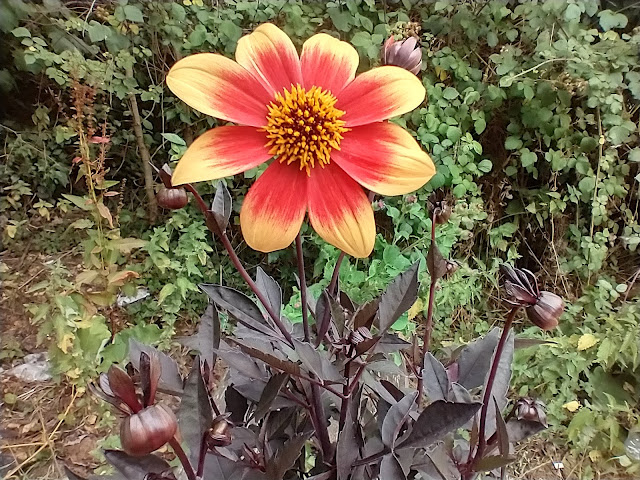Plant Profile: Pyracantha
Until recently I haven't felt the need to grow Pyracantha (aka firethorn) at VP Gardens. It's in abundance on our estate where it forms plenty of the hedge planting, just like it did for us at our previous house. It has plenty of plus points; it's an evergreen shrub, relatively quick to grow and has short, sharp thorns which makes it an effective security barrier.
It also has double season of interest, bearing creamy white flowers in the spring and bright berries from now until they're devoured by the birds. As you can it's a good year for berries. Within a few minutes walk of our house there are both red and orange bearing varieties on show, which echo those found on the rowan trees nearby.
 |
| My border of shame - long, shady and in need of rather a lot of attention |
.JPG) |
| Pyracantha can be trained easily, so it's ideal for hedges - both short and tall - and other forms |
If I do go for it, I shall choose a yellow berried variety so we'll be different to what's around the rest of the estate.
----------------------------------------------------------------------------------------------------------------
Further cultivation notes
Pyracantha is suited to most soils except heavy clay. Berrying can be reduced if the site is shady (so I may need to reconsider its suitability for where I have in mind).
Berries are produced on last season's wood, so this needs to be born in mind when growing as a hedge or other trained forms.
Now (autumn) is a good time to plant. If planting against a wall or fence, plant it about 18 inches away to avoid the dry spot there.
Pyracantha is fully hardy and relatively easy to grow. It attains a height and spread of around 10-12 feet.
Scab and fireblight are the two most common problems. Prune out affected wood/leaves and burn. It may be attacked by woolly aphids which can be washed off with a pressure spray.
Propagation is easy via hard or semi-ripe cuttings. If growing from seed, then 3 months of cold-stratification is needed.
.JPG) The berries aren't edible when raw, though just like Rowan, they can be made into a jelly.
The berries aren't edible when raw, though just like Rowan, they can be made into a jelly.Further reading:
RHS website entry for Pyracantha
A website dedicated to all things Pyracantha
RHS guidance on espallier training trees
----------------------------------------------------------------------------------------------------------------
Plant Profiles is sponsored by Whitehall Garden Centre.
Note to readers:
Sponsorship goes towards my blogging costs; the words are my own There are no cookies or affiliate links associated with this post.
.JPG)

.JPG)











An interesting, and informative, post. Flighty xx
ReplyDeleteThanks Flighty - that's exactly what I'm aiming to do with these posts. Xxx
DeleteWe had a huge pyracantha hedge in the garden before last. Lovely berries, but you do know you will need chainmail gauntlets to prune it, don't you?!
ReplyDeleteHI Juliet - I examined the thorns most carefully when I was taking the photos. I think Rambling Rector is even more viscious! So is the blackthorn that's started to invade the front side garden from the public land next door...
Delete